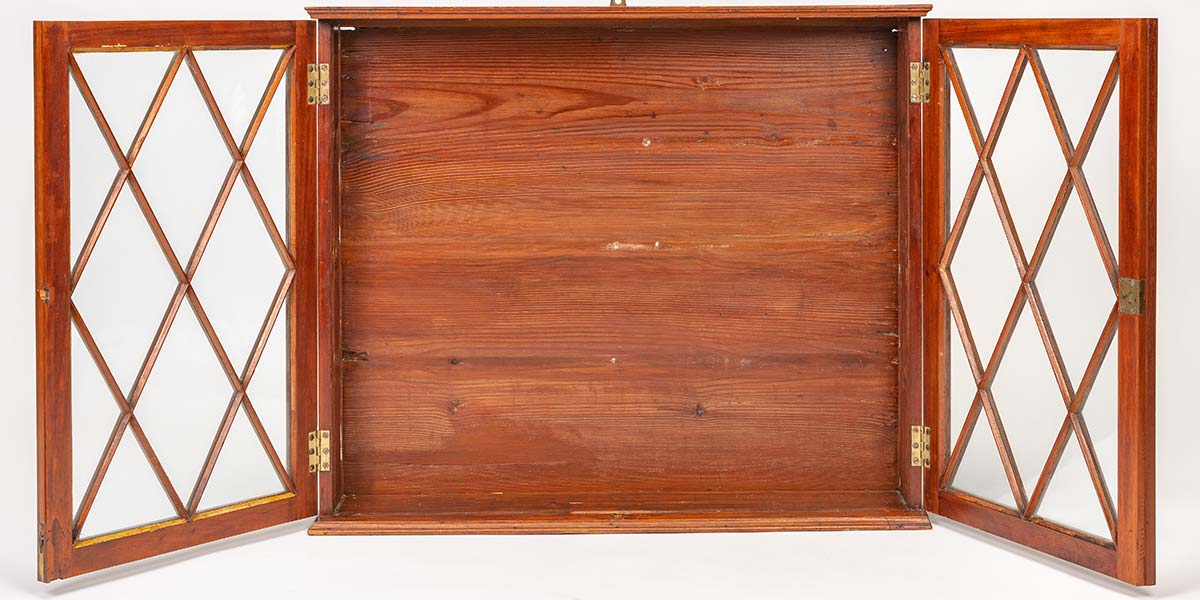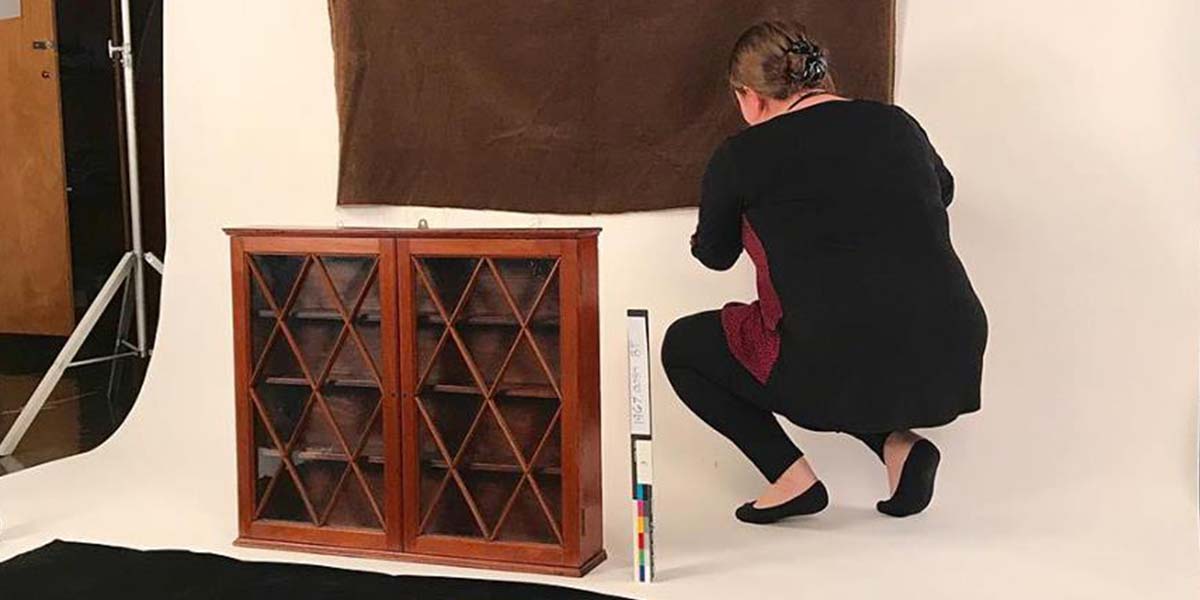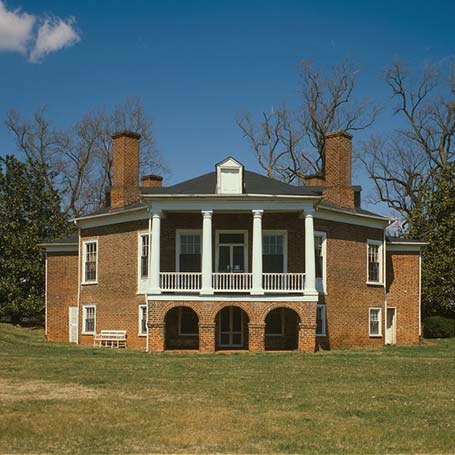Hanging Bookcase

Bookcase, unknown maker, 1790-1810; mahogany, hard pine, cherry, brass; 1967.0053.
This bookcase, likely made for Thomas Jefferson’s use at his retreat and working plantation, Poplar Forest, was created by enslaved artisans at the Monticello cabinetmaking shop. Heading the shop was master joiner John Hemings, who may have built this bookcase or managed the craftsman who did.
Though agriculturally-driven, large plantations like Jefferson’s often included shops where enslaved artisans made everything from iron nails to furniture. These talents helped make the largest plantations more self-sufficient and added value to the plantation owner’s assets. The surviving products of enslaved skilled artisans counter the common misperception that enslaved people were only field works or domestic servants, and sheds light on the reality of their vast social and economic contributions.
Image left: Poplar Forest, Historic American Buildings Survey, Library of Congress
A Conservation Investigation

Conservators, curators, and other museum professionals investigate objects together to bring out the stories these pieces can tell. In 2017, students from the Winterthur and University of Delaware Program in Art Conservation documented and treated this hanging bookcase to learn more about its past and care for its future.
Close looking paired with careful historic research helped determine if Winterthur’s bookcase could have originated on Jefferson’s retreat plantation.
Above: WUDPAC student Lindsey Bachman documents the bookcase with fellow student Joanna Hurd (not pictured.)
From the WUDPAC report:
After Poplar Forest was completed in 1809, the work of the joinery was carried on by enslaved craftsmen including John Hemmings, who became the head craftsmen and was responsible for at least one wall-mounted cabinet still in existence for the Jefferson family. The cabinet made for Jefferson’s grand-daughter, Septimia, is made from walnut and tulip poplar with simple four-pane doors and two shelves. The fronts of the shelves are similar to the Winterthur cabinet in that the primary decoration is beading along the top and bottom edges. However, the Hemmings design is formed by a single deep groove between the beads rather than two narrow grooves separated by a plateau. The molding along the top and bottom edges of the cabinet were intentionally modelled after the Winterthur cabinet during a 1980s restoration campaign. The shelf construction in the Hemmings cabinet is particularly noteworthy because he employed a double, stopped dado. Filler strips were placed in the grooves between the shelves to secure them in place and to hide the empty space. This is a more complicated and skillful approach than the more common single stopped dado.

